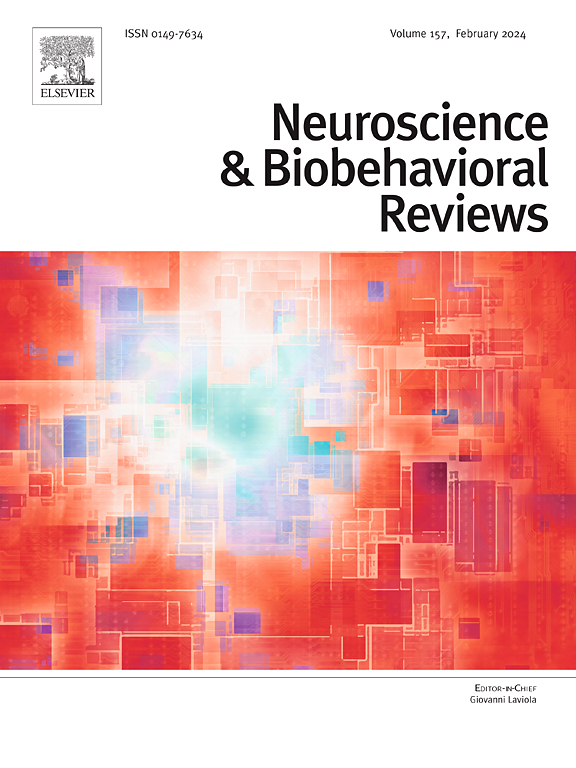从价编码到动机行为:对伏隔核回路的关注。
IF 7.5
1区 医学
Q1 BEHAVIORAL SCIENCES
引用次数: 0
摘要
我们的大脑如何判断事物是好是坏?大脑将刺激评价为积极或消极的能力——通过归因效价——是生存和决策的基础。不同的大脑区域与价编码有关,包括伏隔核(NAc)。NAc主要由gaba能介质棘神经元(MSNs)组成,根据其多巴胺受体表达分为两个不同的群体:d1受体表达(D1-MSNs)和d2受体表达神经元(D2-MSNs)。经典模型提出了二元功能作用,其中D1-MSNs仅介导奖励和正效,而D2-MSNs则处理厌恶和负效。然而,我们现在认识到NAc MSN亚群的运作方式比以前认为的更复杂,在价相关行为中通常是合作的,而不是对抗的。这篇综述综合了我们目前对价编码神经回路的了解,重点是NAc。我们检查了电生理学、钙成像、光遗传学、化学遗传学和药理学研究,详细介绍了NAc介质棘神经元对奖励和厌恶反应的贡献。最后,我们探索新兴的技术创新,有望推进我们对哺乳动物大脑如何编码价并将其转化为行为的理解。本文章由计算机程序翻译,如有差异,请以英文原文为准。
From valence encoding to motivated behavior: A focus on the nucleus accumbens circuitry
How do our brains determine whether something is good or bad? The brain's ability to evaluate stimuli as positive or negative – by attributing valence - is fundamental to survival and decision-making. Different brain regions have been associated with valence encoding, including the nucleus accumbens (NAc). The NAc is predominantly composed of GABAergic medium spiny neurons (MSNs), which segregate into two distinct populations based on their dopamine receptor expression: D1-receptor-expressing (D1-MSNs) and D2-receptor-expressing neurons (D2-MSNs). Classical models propose a binary functional role, where D1-MSNs exclusively mediated reward and positive valence, while D2-MSNs processed aversion and negative valence. However, we now recognize that NAc MSN subpopulations operate in a more complex manner than previously thought, often working cooperatively rather than antagonistically in valence-related behaviors. This review synthesizes our current knowledge of valence-encoding neurocircuitry, with emphasis on the NAc. We examine electrophysiological, calcium imaging, optogenetic, chemogenetic and pharmacological studies detailing the contribution of NAc medium spiny neurons for rewarding and aversive responses. Finally, we explore emerging technical innovations that promise to advance our understanding of how the mammalian brain encodes valence and translates it into behavior.
求助全文
通过发布文献求助,成功后即可免费获取论文全文。
去求助
来源期刊
CiteScore
14.20
自引率
3.70%
发文量
466
审稿时长
6 months
期刊介绍:
The official journal of the International Behavioral Neuroscience Society publishes original and significant review articles that explore the intersection between neuroscience and the study of psychological processes and behavior. The journal also welcomes articles that primarily focus on psychological processes and behavior, as long as they have relevance to one or more areas of neuroscience.

 求助内容:
求助内容: 应助结果提醒方式:
应助结果提醒方式:


